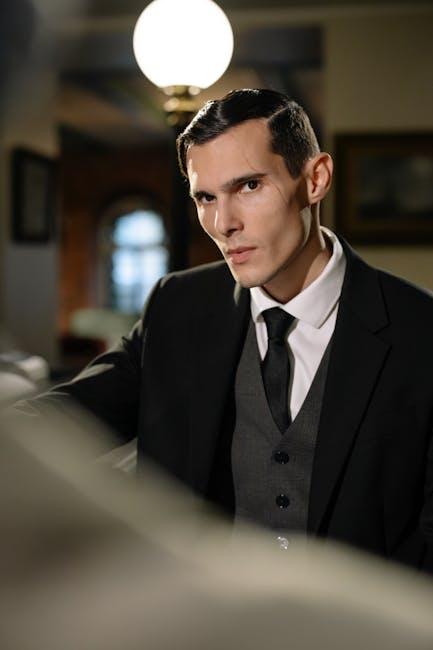Darren Aronofsky stands as a formidable force in contemporary cinema, a director whose audacious approach to storytelling delves deep into the labyrinthine corridors of the human psyche. With a filmography that defies conventional boundaries, Aronofsky crafts narratives that are as unsettling as they are enlightening, challenging audiences to confront the raw, unvarnished truths of existence. His unique vision marries the cerebral with the visceral, inviting viewers on a journey through themes of obsession, identity, and transcendence. In exploring the creative boldness of Aronofsky, we uncover not just the mind of a filmmaker, but a profound exploration of what it means to be human.
Diving into the Depths: Aronofskys Exploration of Human Emotion
Darren Aronofsky’s films are a visceral journey into the labyrinth of human emotion, where each frame is meticulously crafted to unravel the complexities of the psyche. His work stands out for its unflinching portrayal of the raw and often unsettling facets of human nature. From the harrowing descent into addiction in Requiem for a Dream to the obsessive pursuit of perfection in Black Swan, Aronofsky delves deep into the fragile yet resilient human spirit.
- Psychological Depth: Characters are often driven by obsession, pushing the boundaries of sanity.
- Visual Storytelling: Use of stark imagery and symbolic motifs to evoke emotional responses.
- Soundscapes: Music and sound design that enhance the emotional gravity of the narrative.
Aronofsky’s exploration is not just about the darkness within but also the light that flickers in moments of vulnerability and redemption. His films challenge audiences to confront their own emotions, making them an integral part of the storytelling experience.
Visual Storytelling: How Aronofsky Captures the Unseen
Darren Aronofsky’s films are a masterclass in visual storytelling, where every frame is meticulously crafted to reveal the layers of the human psyche. His unique ability to capture the unseen is evident through his use of visual metaphors and symbolism. In films like Requiem for a Dream and Black Swan, he employs stark contrasts, close-ups, and rapid cuts to convey the inner turmoil of his characters, allowing audiences to experience their psychological landscapes.
- Symbolic Imagery: Aronofsky uses recurring symbols, such as mirrors and spirals, to explore themes of identity and obsession.
- Color Palette: He often manipulates color to evoke emotion, using muted tones to depict despair or vibrant hues to illustrate mania.
- Cinematic Techniques: Techniques like time-lapse and split screens are employed to distort reality and provide a glimpse into his characters’ fractured minds.
By intertwining these elements, Aronofsky not only tells a story but also invites viewers to delve deeper into the subconscious, challenging them to see beyond the surface and confront the complexities of the human condition.

Narrative Complexity: The Art of Challenging Audiences
Darren Aronofsky has mastered the art of crafting films that demand active engagement, urging audiences to dive deep into intricate narratives that reflect the complexities of the human psyche. His works often eschew straightforward storytelling in favor of layered, non-linear structures that challenge viewers to piece together meaning. This approach not only captivates but also invites introspection, as audiences are compelled to confront unsettling questions about identity, obsession, and morality.
- Multi-layered Storylines: Aronofsky’s films often intertwine multiple plots, each revealing different facets of the central theme.
- Symbolism and Metaphor: Rich in symbolism, his narratives encourage viewers to interpret and re-interpret scenes, fostering a personalized understanding.
- Complex Characters: His protagonists are frequently flawed and multifaceted, offering no easy answers and provoking thought long after the credits roll.
By embracing narrative complexity, Aronofsky not only challenges conventional storytelling but also enhances the viewer’s experience, transforming film into a medium for profound exploration.

Mastering Mood: Techniques for Crafting Cinematic Tension
In Darren Aronofsky’s films, tension is not just an element—it’s a living, breathing entity that grips the audience from the first frame to the last. His mastery of mood is achieved through a meticulous blend of visual and auditory techniques, each carefully crafted to delve deep into the human psyche. Aronofsky employs stark contrasts in lighting to highlight emotional extremes, using shadows and harsh lights to create a sense of unease. This visual approach is complemented by his innovative sound design, where discordant music and ambient noise often merge to amplify the emotional stakes.
Aronofsky’s narrative style also plays a crucial role in crafting tension. He frequently utilizes non-linear storytelling, which keeps viewers on edge, piecing together the narrative puzzle. Furthermore, his characters are often trapped in claustrophobic environments, both physically and mentally, intensifying the sense of impending doom. Key techniques include:
- Close-up shots that capture the minutiae of a character’s distress.
- Rapid editing sequences that mimic the character’s spiraling thoughts.
- Symbolic imagery that evokes a visceral emotional response.
By weaving these elements together, Aronofsky doesn’t just tell a story; he creates an immersive experience that forces the audience to confront the depths of human emotion.

